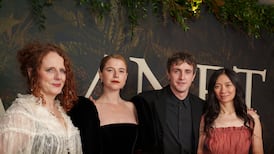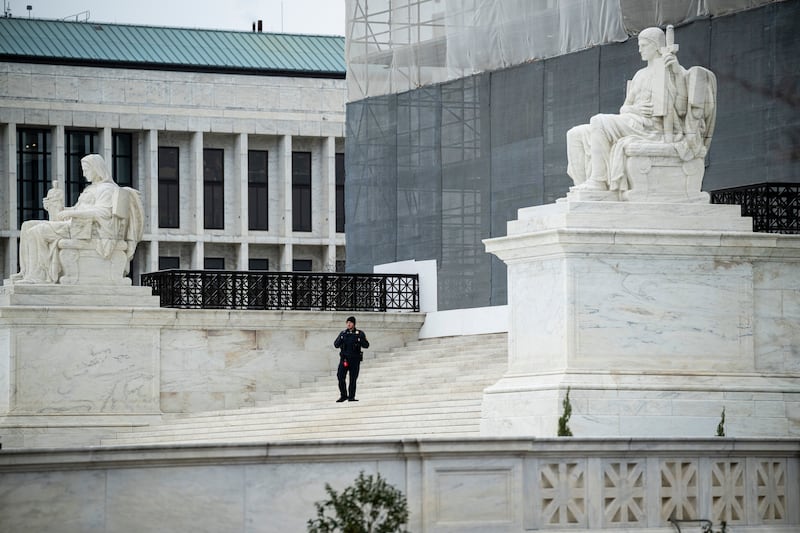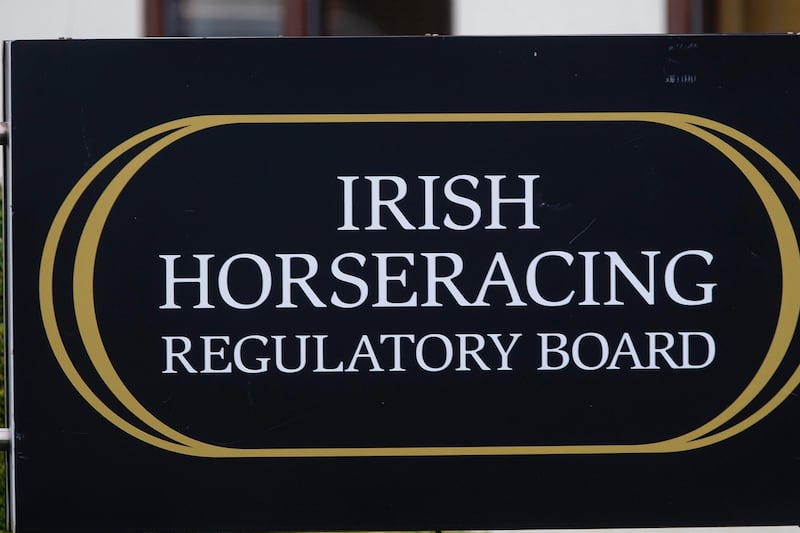Have you ever wondered how to replicate the sound of breaking bones? Simply crack a stick of celery. Unless it’s a broken nose you’re after, in which case you might want rigatoni pasta. For Caoimhe Doyle and Jean McGrath it’s all part of a day at the office. Working out of the Foley Lab, in a quiet part of Co Wicklow, the award-winning pair are behind the sounds you hear in film and on TV, from Normal People to Game of Thrones, An Cailín Ciúin to Evil Dead Rise.
The Foley Lab was designed by Doyle’s husband, and studio co-owner, Jon Reynolds, and while it seem a cliche that film-making is the art of illusion, truly it is. That gritty scene of an anti-hero lighting up a crackling cigarette, the swish of silk and velvet as a Regency heroine flounces out, the sinister echo of footsteps in a dark alley: they’re all overlaid later, and that is foley sound, a craft that owes its origins, and its name, to an Irish man. Foley sound, as McGrath explains, is different from special effects. Score, sound design and sound editing are different again, but the swish of fabric, soft footfalls on snow, the sound of water filling a kettle – they’re all foley. At Doyle and McGrath’s studios there are hundreds of pairs of shoes and a whole haberdashery of fabric.
Foley is an energetic business. Doyle and McGrath usually have only a couple of days from seeing raw footage to starting on their work, and anything from seven to 20 days to complete it, though they always wish it were more. “We scan through, to get a feel of what it’s about,” McGrath says. “We try to break it down into different sections. We go through and do all the feet. Then we’ll do the props: anything the actors are handling, anything else to enhance the storytelling. Then we’ll do a cloth pass, which is basically all the cloth movements of the characters.”
Nothing is prerecorded. “We custom design everything for every project,” she says. “You’re never going to get a character on the same kind of surface or in the same type of room.” This means Doyle, or another member of the small team, follows the action of the film, or TV episode, several times. “Doing the feet” means they will don an appropriate pair of shoes from the Foley Lab collection, then go through the steps so that the sound is recorded in real time, engineered by McGrath.
READ MORE
“Ballet shoes, tap shoes, rollerblades, ice skates, fireman’s boots: whatever it is, I’ve got it,” she says. “The hardest of all? Clogs and bare feet.” There’s a pause, before the pair go on to recall a film that was all clogs and bare feet. Energetic and witty, they combine a sense of irreverence with being deadly serious about their work, which you often find in people who are experts in their field.
Doyle came to film after a career guidance counsellor showed the opening sequence of Nicolas Roeg’s Don’t Look Now at her school. “I was riveted in my seat. I’d never seen a movie like it. I couldn’t believe that the craft of film could be a job. It just hadn’t occurred to me.” McGrath’s route was via music. “I wanted to try and get work as a sound engineer.” After studying in London, she returned to Ireland in time to get a job, initially as a runner, with Ardmore Sound, where there is a purpose-built foley studio.
Foley sound is named for its inventor. The son of Irish immigrants to the United States, Jack Donovan Foley was born in 1891; he left New York for Los Angeles after his marriage, in search of better weather. Coinciding with the early days of the film industry’s move to California, he got involved. In a story worth a film in its own right, Foley was in at ground level when sound came into the pictures. He voiced the first Tarzan yell, in 1929, but what would become known as foley sound really came into its own with Show Boat, that same year, when Universal Studios decided to turn its silent film into a talkie. Early equipment wasn’t good enough to pick up more than dialogue, so, borrowing techniques from live radio drama, Foley created an entire industry.
According to Doyle, Foley saved the day on Spartacus, Stanley Kubrick’s 1960 film, after a sound recording glitch in one of the scenes with a cast of thousands. He had this “absolutely genius idea to augment the sound”, she says. “He got a big bunch of keys and he shook it in sync with the guys on screen. Now that I’ve told you, if you go and watch that sequence, you’ll hear a bunch of keys clear as day.” By the end of his career, Foley calculated, he had personally walked more than 8,000km in making sounds for films.
Some foley sounds are based on techniques that have been passed down through generations, while some call for a little innovation. Coconut shells are regularly called into service for the sound of horses’ hooves, but Doyle and McGrath reckoned the Dothraki needed something a little more resonant for Game of Thrones. Cue a call to a taxidermist to find actual hooves.
But many of the props they use are much closer to hand. Cornflour in a leather pouch makes the sound of crunching snow. Cellophane and crisp bags can crackle like fire – but burning plastic bags work for a gentler fire, or for the sound of candles. Walnuts clink like ice in a glass without melting. Gloves can sound like flapping birds’ wings. Old pallets are good for creaking floorboards. Old video tapes can stand in for footsteps on grass. And some swear by the latch of a briefcase to mimic the cocking of a gun.
In my old house, the sound of my bedroom door closing always reminded me of the swooshing sound the undead would make when whizzing around in The Vampire Diaries. It could well have been something similar. The best foley artists are gifted with a very good ear, an alertness to the noises around them and a great deal of lateral thinking.
Working on Lenny Abrahamson’s film Room, based on the book by Emma Donoghue, the pair were looking for the right sound for the room’s closing door – “like a vacuum, like all the air was getting sucked out”, McGrath says. “We heave this big heavy door into the studio and we put a contact mic there. Luckily, every time we opened and closed that door we noticed this very interesting sound. We were able to record that and give it to the designer, to layer into his effects and his design.”
Foley is nothing if not varied. At the Foley Lab there are sound studios, a huge array of interior and exterior surfaces, an even vaster array of props and shoes, and a 1,600-litre water tank. “We’ve drowned in it, we’ve swum in it, we’ve sailed ships in it,” Doyle says, laughing. “We also have smaller tanks, and a kind of graded puddle, where we can do things like footsteps walking through the shallows.”
Different films have different intimacies of sound. An Cailín Ciúin called for fine details, and an array of microphones to move sound around, all in order to bring the audience closer to the characters. Evil Dead Rise necessitated multiple trips to the supermarket for melons, chickens and lobsters, all vital for the squelching acoustics of a zombie apocalypse.
Moving away from corpses, we talk of love. Doyle demonstrates the sound of different kisses, on the back of her hand. “Kisses are snowflakes,” she says. “So individual: if it’s a mother kissing her son, or a hot kiss, or a lover’s kiss, or a lover’s kiss but one of them isn’t particularly into the other one. That’s its own kind of kiss, too. A kiss is really specific.
“That’s the thing about foley,” she continues. “It’s the magic of picture and sound. It’s a marriage of the two things together. It’s the same with every single aspect of sound, and that’s why myself and Jean haven’t been replaced by computers. It’s why we’re performing the same way that it has been performed since the 1930s.”
Caoimhe Doyle and Jean McGrath will be giving a foley sound workshop at Fastnet Film Festival, in Schull, Co Cork, on Saturday, May 27th; €10
This year’s festival also includes short films by Irish and international film-makers; feature films, including Ireland’s 2023 Oscar contenders; Lá Teanga na Gaeilge ar Oileán Chléire, a day of Irish-language films, including a walking trail to various venues showing short films, on Cape Clear; films from Ukraine; and interviews, discussions and workshops covering everything from working with an agent to making action films



















